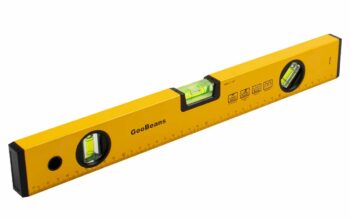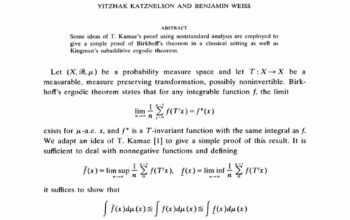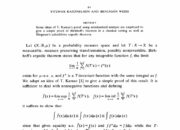The phenomenon of ferroelectricity, akin to the subtle yet profound power embedded within tiny entities, has found a burgeoning domain in the nanoscale realm. This exploration reveals the intricate relationship between microscopic structures and their macroscopic implications, drawing parallels to the idea of “tiny but mighty.” As researchers delve into the properties of ferroelectric materials at nanometric dimensions, a tapestry of unique characteristics and applications emerges, showcasing how diminutive elements can wield significant influence in the realms of electronics and energy storage.
Ferroelectricity is characterized by a material’s ability to exhibit spontaneous electric polarization that can be reversed by the application of an external electric field. Historically, materials such as barium titanate and lead zirconate titanate have been identified as classical ferroelectrics, exhibiting this remarkable ability due to their non-centrosymmetric crystal lattice structures. What elevates the intriguing narrative of ferroelectricity into the nanoscale milieu is the pronounced emergence of size-dependent phenomena. As material dimensions are shrunk to the scale of nanometers, the electrostatic interactions and domain dynamics that define ferroelectricity become more pronounced, revealing behaviors that deviate from their bulk counterparts.
The transition from bulk to nanoscale introduces a plethora of unique effects that tantalize the scientific community. One of the most salient aspects is the enhancement of polarization. In nanoparticles, surface effects become increasingly significant, often leading to an augmented polarization that breaches the limitations observed in larger samples. This is particularly striking in ferroelectric nanostructures where the surface-to-volume ratio becomes substantial. The reconfiguration of domain walls, which are the boundaries between regions of differing polarization, can dictate the overall electrical properties of the material. In this exquisite microcosm, the interplay between geometry, boundary conditions, and internal strain introduces unprecedented avenues for control and manipulation.
Incorporating ferroelectric materials into nanostructures also prompts a re-evaluation of their functional applications. One compelling manifestation of this synergy lies in the realm of memory devices, where the scalability and rapid switching capabilities of ferroelectric materials at the nanoscale render them suitable for non-volatile memory applications. Ferroelectric random access memory (FeRAM) is a prime illustration, showcasing how the integration of nanoscale ferroelectrics can lead to enhanced retention times, lower power consumption, and improved speed compared to traditional memory technologies. Concepts such as multiferroicity, where materials exhibit more than one ferroic order, can be enabled through nanostructuring, thereby expanding the horizons of functionality.
An equally pivotal aspect of nanoscale ferroelectrics is their potential for energy harvesting and storage. The rise of smart materials—those capable of converting mechanical energy into electrical energy—has been supported through the employment of ferroelectric nanogenerators. These devices leverage the piezoelectric effect inherent in ferroelectric materials, allowing for the efficient conversion of kinetic energy into electrical energy. The miniaturization of these generators into nanoscale forms not only caters to advancements in energy technology but also opens pathways for integration into ubiquitous small devices, enhancing their autonomy and sustainability.
Furthermore, as scientists venture deeper into the nanoscale territory, they unearth emergent phenomena such as ferroelectricity in low-dimensional systems, including two-dimensional materials. The investigation of ferroelectricity in ultrathin films and monolayers has unveiled previously unimagined possibilities, including the manifestation of ferroelectricity in materials that do not present ferroelectric characteristics at bulk dimensions. This phenomenon captivates researchers, as it suggests a reassessment of established paradigms in material science. The distinct properties of these low-dimensional ferroelectrics are largely attributed to quantum effects and reduced dimensional confinement, emphasizing the need for advanced experimental techniques to elucidate their behavior and applications.
Nonetheless, the pursuit of nanoscale ferroelectrics is not without challenges. The synthesis and characterization of uniform ferroelectric nanostructures often involve complex methodologies and precise control over growth conditions to mitigate defects and inhomogeneities that can hinder performance. Moreover, a comprehensive understanding of the underlying mechanisms dictating the enhanced properties at the nanoscale remains a central research pursuit. Addressing these challenges necessitates a collaborative interdisciplinary approach, integrating insights from condensed matter physics, materials science, and electrical engineering.
In conclusion, the exploration of ferroelectricity at the nanoscale epitomizes the adage “tiny but mighty.” Through the intricate interplay of size-dependent phenomena, researchers are uncovering a landscape abundant with unique properties and innovative applications. As modern technologies increasingly gravitate towards miniaturization, the significance of these nanoscale ferroelectric materials becomes undeniably paramount. Their capacity to drive advancements in memory technologies, energy management, and smart materials not only showcases their scientific intrigue but exemplifies the overarching quest to harness the formidable potential encapsulated within the smallest of entities. The narrative of ferroelectricity at the nanoscale continues to evolve, promising transformative impacts across various scientific and technological domains.












